July, 1950
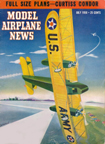
Curtiss B-2 "Condor"
Model Airplane News Cover Art for July, 1950
by Jo Kotula
Click to Enlarge
The Curtiss B-2 Condor was a 1920s United States bomber aircraft. It was a descendant of the Martin NBS-1, which was built by the Curtiss Aeroplane and Motor Company for the Glenn L. Martin Company. There were a few differences, such as stronger materials and different engines, but they were relatively minor.
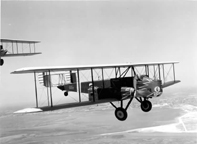
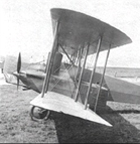
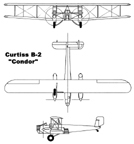
Curtiss B-2 "Condor"
Click to Enlarge
The B-2 was a large fabric-covered biplane aircraft. Its two engines sat in nacelles between the wings, flanking the fuselage. It had a twin set of rudders on a twin tail, a configuration which was becoming obsolete by that time. At the rear of each nacelle was a gunner position. In previous planes, the back-facing gunners had been in the fuselage, but their view there was obstructed. A similar arrangement (using nacelle-mounted gun platforms) was adopted in the competing Keystone XB-1 aircraft.
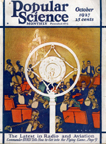

Curtiss B-2 "Condor" Media Presence
in the October, 1927 issue of Popular Science
Click to Enlarge
In a very early form of the "Media Blitz", Popular Science magazine had a full page on the Curtiss Condor, lauding the ungainly thing as a "Flying Battleship".
The XB-2 competed for a United States Army Air Corps production contract with the similar Keystone XB-1, Sikorsky S-37, and Fokker XLB-2. The other three were immediately ruled out, but the Army board appointed to make the contracts were strongly supportive of the smaller Keystone XLB-6, which cost a third as much as the B-2. Furthermore, the B-2 was large for the time and difficult to fit into existing hangars. However, the superior performance of the XB-2 soon wrought a policy change, and in 1928 a production run of 12 was ordered.
A later version of the B-2 featured dual controls for both the pilot and the copilot. This "dual control" setup became standard on all bombers by the 1930s. The B-2 design was also used as a transport. The B-2 was quickly made obsolete by technological advances of the 1930s, and served only briefly with the Army Air Corps, being removed from service by 1934. Following production of the B-2, Curtiss Aircraft left the bomber business, and concentrated on the Hawk series of pursuit aircraft in the 1930s.
Here is a video of the Curtiss B-2 "Condor" in action:
Click Here for more information about the Curtiss B-2 "Condor".

Click to go back and select another cover.
Counter for the Entire Site (not just this page..)
Home | About Lindy | Last Week's Reviews | Upcoming Events | 1940s Collecibles
The Guide - Establishments - Travel - Accessories
Music | Links | Photo Gallery | Extras | Contact